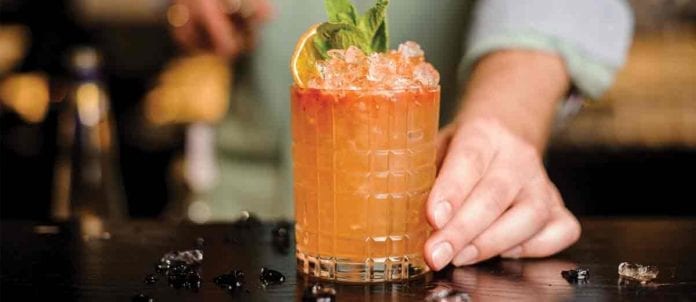Sophisticated craftsmanship, complex flavours, natural ingredients and eye-catching presentation are all descriptors commonly reserved for alcoholic beverages, such as cocktails. For guests looking for non-alcoholic drinks, the options are usually less exciting. This is, however, changing in a big way. The craft-soda category continues to grow from obscurity into mainstream, mixologists are getting exponentially more creative in the art of mocktails and sugar is being replaced with natural sweeteners and spices. In November 2017, California-based Grand View Research Inc. reported the global soda market accounted for $US537.9 million. That market is expected to grow at a compound annual growth rate of 3.5 per cent to reach a projected $US732.4 million by 2025. Based on the same study, the research firm found the greatest cause for growth in the segment is mounting social awareness of health problems caused by sugary and alcoholic drinks. The beverage market as a whole, therefore, is undergoing a reformation from drinks containing high doses of sugar and artificial sweeteners to low-calorie beverages made with natural ingredients.
But health-conscious consumers aren’t the only group pushing the beverage reformation. Craft sodas and mocktails serve as great options for guests who are driving or pregnant but would still like to enjoy something with a bit more excitement than the typical juice, cola or water alternative. “If you’re having a drink with colleagues and you are having a non-alcoholic drink while they are having an alcoholic drink, you don’t want to feel like the poor relation,” Dan Gasper, co-founder and COO of UK-based Distill Ventures, recently said at a media luncheon. Distill Ventures has invested more than $US70 million in various brands in the non-alcoholic space.
In the burgeoning mocktail category, bartenders are unanimous in their belief that natural, unique ingredients are paramount. Often, they have to be more creative with mocktails in order to compensate for the missing punch alcohol gives a cocktail. “If there’s no alcohol used, the actual syrup becomes the base of the drink because it carries the main flavour,” Roman Foltan, head bartender at Singapore’s Atlas Bar told Michelin Guide Singapore. “Mimicking the sharpness and warmth of alcohol is about the intensity of the cordial you use; you’re never going to achieve the sharpness of the alcohol, so you have to up the intensity of the cordial and flavour profile.”
In addition to using the right ingredients, mocktails need presentation that meets the same standard cocktails enjoy. “You want your drink to look amazing and be presented in the same fashion you’d expect a great cocktail to,” says Gasper.
The Evening Elixir, shared in McCormick’s 2018 Flavour Forecast is an example of a mocktail with both a sophisticated flavour profile and presentation. It pairs fresh ingredients, such as pineapple, with the flavours of turmeric and ginger and dandelion greens for presentation.
The rise in mocktail popularity presents mixologists with yet another great opportunity to showcase their talents in whole new ways.
Written by Eric Alister


















